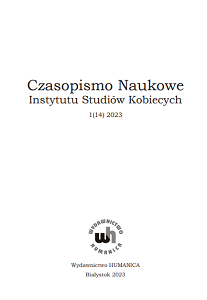Maria Sieroszewska (1881-1964). Studium przypadku
Maria Sieroszewska (1881-1964). Case Study
Author(s): Grażyna LegutkoSubject(s): Social history, Sociology of Culture, 19th Century, Pre-WW I & WW I (1900 -1919), Interwar Period (1920 - 1939), WW II and following years (1940 - 1949), Post-War period (1950 - 1989)
Published by: Wydawnictwo HUMANICA Instytut Studiów Kobiecych
Keywords: Maria Sieroszewska; Wacław Sieroszewski; Siberia; exile; multiculturalism;
Summary/Abstract: The article is an attempt to re-enactment the unknown part of Maria Sieroszewska life. She was a daughter of Wacław Sieroszewski (1858–1945), the Polish man who was exiled to Siberia and Arina Czełba-Kysa (1860–1886), an Yackut woman who came from Wierchojańsk. Maria was a half-orphan. When she was a five-years-old-girl, her mother died. When she was sixteen years old, her father came back to Poland and left her with his friends in Czarist Russia. Maria grew up in the area that contained three cultures: Polish, Russian and Sakha. Her life exemplifies the dramatic fate of children whose parents were from two other countries (mother was from Asia, father came from Europe) in that time.
Journal: Czasopismo Naukowe Instytutu Studiów Kobiecych
- Issue Year: 2023
- Issue No: 14
- Page Range: 93-108
- Page Count: 16
- Language: Polish

